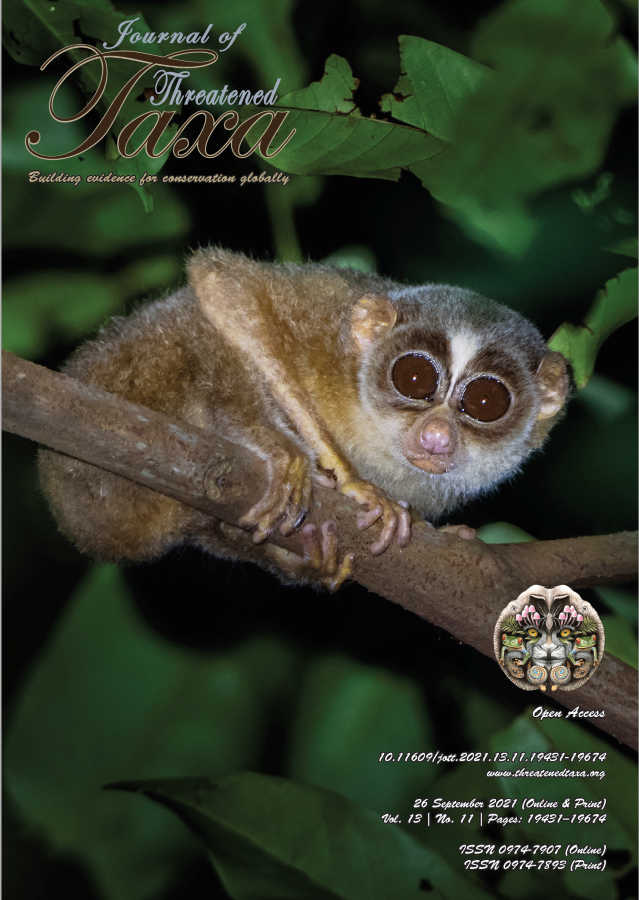Intestinal coccidiosis (Apicomplexa: Eimeriidae) in a Himalayan Griffon Vulture Gyps himalayensis
Main Article Content
Abstract
A free-ranging juvenile Himalayan Griffon Vulture from the Haldwani forest range division, Nainital, Uttarakhand, on detailed inspection, showed dullness, weakness, emaciation, ruffled feathers, droopy head, and watery whitish diarrhoea. It was unable to bear its own weight on both the legs. The bird died later and the post mortem revealed haemorrhagic intestinal tract. Based on the findings and microscopical examination it was confirmed as intestinal coccidiosis.
Article Details

This work is licensed under a Creative Commons Attribution 4.0 International License.
Authors own the copyright to the articles published in JoTT. This is indicated explicitly in each publication. The authors grant permission to the publisher Wildlife Information Liaison Development (WILD) Society to publish the article in the Journal of Threatened Taxa. The authors recognize WILD as the original publisher, and to sell hard copies of the Journal and article to any buyer. JoTT is registered under the Creative Commons Attribution 4.0 International License (CC BY), which allows authors to retain copyright ownership. Under this license the authors allow anyone to download, cite, use the data, modify, reprint, copy and distribute provided the authors and source of publication are credited through appropriate citations (e.g., Son et al. (2016). Bats (Mammalia: Chiroptera) of the southeastern Truong Son Mountains, Quang Ngai Province, Vietnam. Journal of Threatened Taxa 8(7): 8953–8969. https://doi.org/10.11609/jott.2785.8.7.8953-8969). Users of the data do not require specific permission from the authors or the publisher.
References
Dolnik, O.V., V.R. Dolnik & F. Bairlein (2010). The effect of host foraging ecology on the prevalence and intensity of coccidian infection in wild passerine birds. Ardea 98: 97–103.
Jayathangaraj, M.G., S. Gomathinayagam & V. Bhakyalakshmi (2008). Incidence of coccidiosis in captive wild birds. Tamil Nadu Journal of Veterinary & Animal Sciences 4(4): 156.
Soulsby, E.J. (1982). Helminths, Arthropods and Protozoa of Domestic Animals. 7th Edition. ELBS, Bareilly Tindall, London.
Urquhart, G.M., J. Armour, J.L. Duncan, A.M. Dunn & F.W. Jennings (1994). Veterinary Parasitology. Longman Scientic and Technical, England.
Williams, R.B. (1999). A compartmentalised model for the estimation of the cost of coccidiosis to the world’s chicken production industry. International Journal of Parasitology 29: 1209–1229.

